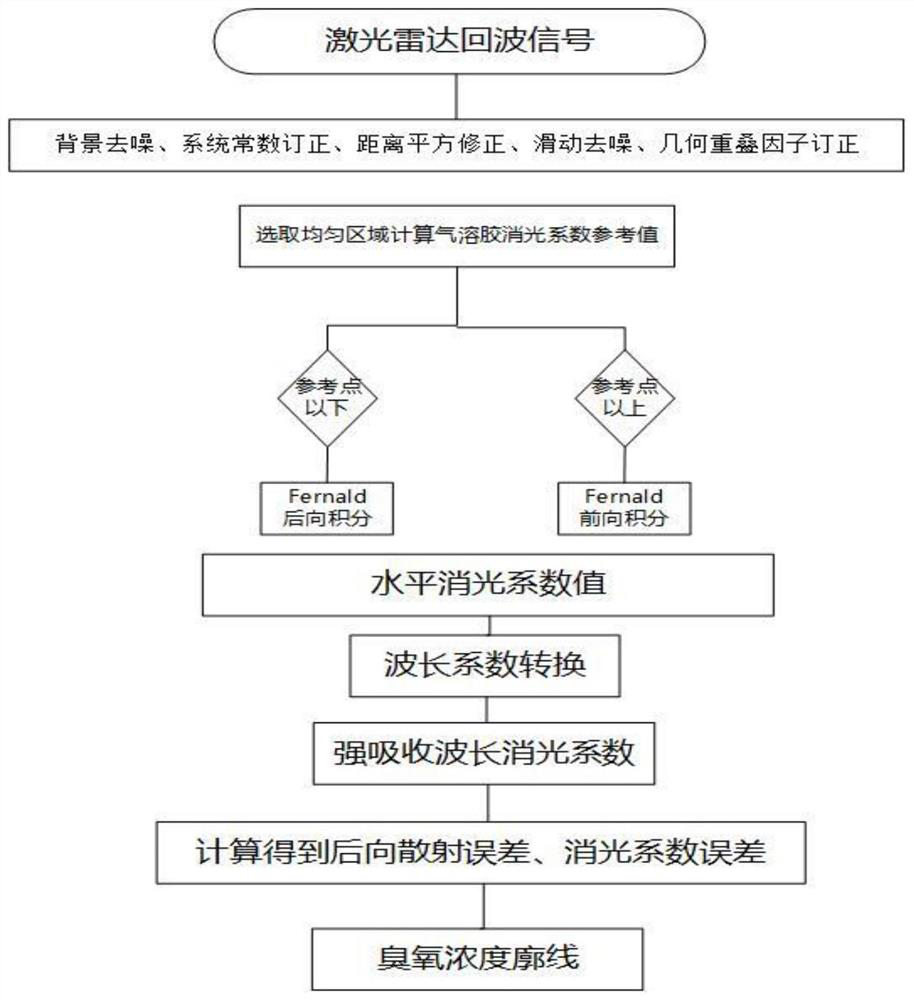Ozone concentration inversion method based on horizontal scanning laser radar
A technology of ozone concentration and lidar, which is used in the re-radiation of electromagnetic waves, the measurement of color/spectral characteristics, and the use of re-radiation, etc., to achieve the effect of high detection efficiency and large coverage.
- Summary
- Abstract
- Description
- Claims
- Application Information
AI Technical Summary
Problems solved by technology
Method used
Image
Examples
Embodiment
[0053] Example: Reference figure 1 Shown is a method for inversion of ozone concentration based on horizontal scanning lidar, the method may include the following steps:
[0054] T1: Obtain the ozone concentration distribution on the horizontal plane by scanning the echo signal of the lidar to obtain the original data;
[0055] T2: Preprocessing the raw data;
[0056] T3: Use the Collis method to perform segmented sliding fitting on the entire profile with a fixed fitting step. During the fitting process, the fitting correlation coefficient, fitting extinction value, corresponding reference height, and signal-to-noise ratio are returned. In the data whose signal-to-noise ratio is greater than the empirical threshold of the signal-to-noise ratio, an extinction coefficient value with the highest correlation and the farthest reference height is selected as the initial reference value, and the height corresponding to the initial reference value is used as the reference height;
...
PUM
 Login to View More
Login to View More Abstract
Description
Claims
Application Information
 Login to View More
Login to View More - R&D Engineer
- R&D Manager
- IP Professional
- Industry Leading Data Capabilities
- Powerful AI technology
- Patent DNA Extraction
Browse by: Latest US Patents, China's latest patents, Technical Efficacy Thesaurus, Application Domain, Technology Topic, Popular Technical Reports.
© 2024 PatSnap. All rights reserved.Legal|Privacy policy|Modern Slavery Act Transparency Statement|Sitemap|About US| Contact US: help@patsnap.com










